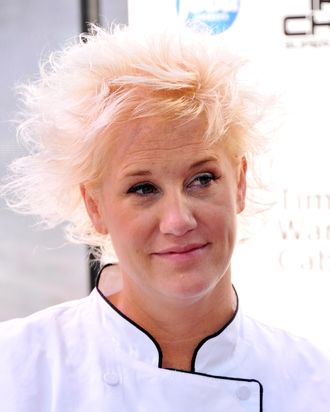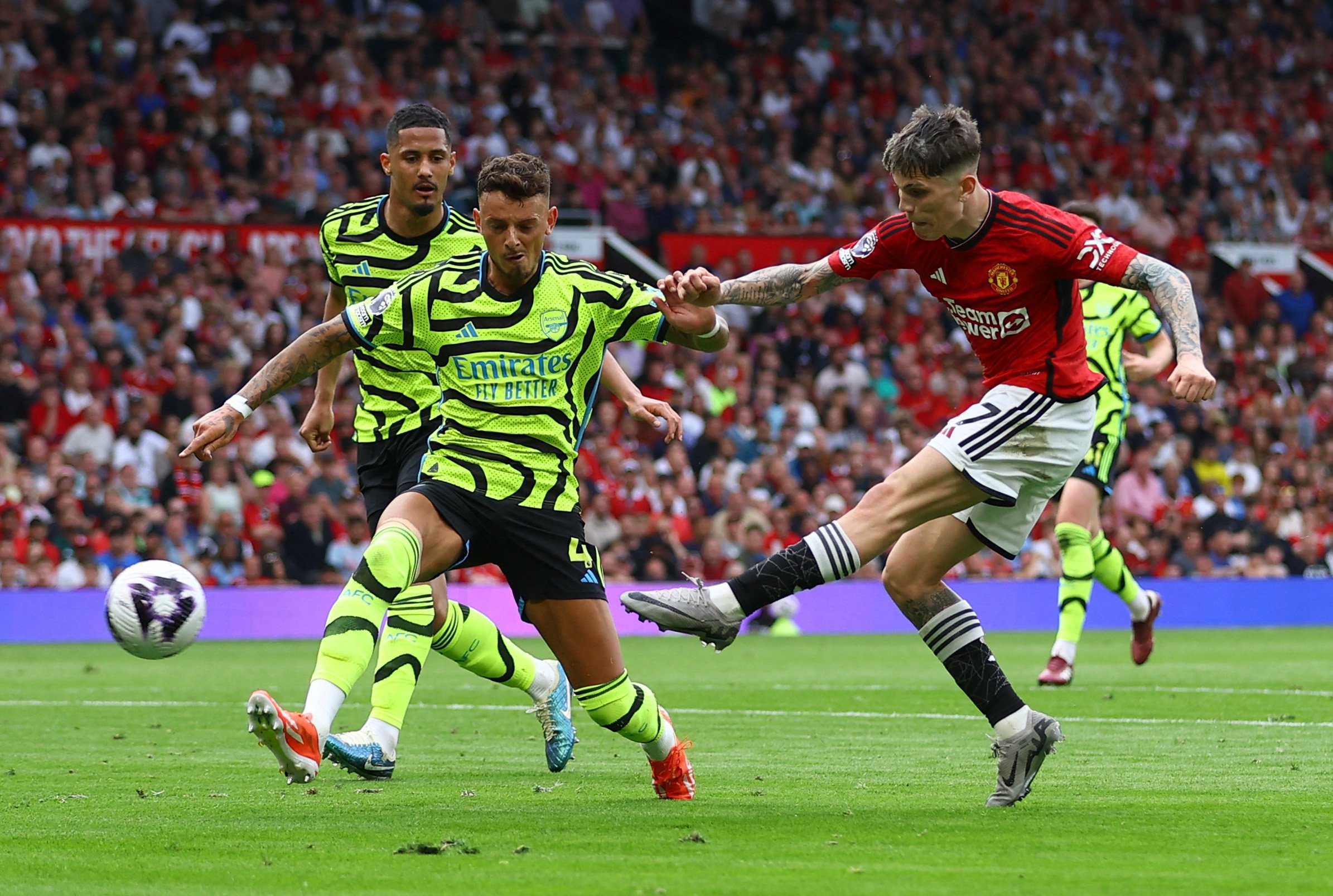Anne Burrell and the Vast Influence of the TV Chef
By , food editor at New York Magazine who has been covering restaurants and the way we eat since 2006

Burrell in 2011. Photo: Getty Images
For the many Americans who know Anne Burrell’s name, their first exposure to her likely came during an episode of Iron Chef America, where she toiled away as an assistant to one of the “real” Iron Chefs, Mario Batali. Whether intentional or not, this setup sent a signal to viewers who might not otherwise be familiar with the inner workings of kitchen life: Behind the celebrity chef, there is a small army of people doing the real work to keep that chef’s restaurants running. These are the grunts in the thick of it, the soldiers in the shit. Burrell’s blonde spikes were unmistakable on Iron Chef, as was her role: She was one of the people doing the real work of cooking.
Of course she was cooking in restaurants, and as she stepped out of Batali’s shadow and her own star rose across shows such as Worst Cooks in America, Chopped, and Secrets of a Restaurant Chef (as the New York Times notes, Burrell was “a staple on the Food Network”), this was the persona she adopted: The working chef who was happy to roll up her sleeves and do the work herself.
Her own New York restaurant, Phil and Anne’s Good Time Lounge, which she ran with business partner Phil Casaceli, was open less than a year, which says more about the brutal reality of the restaurant trade than it does about Burell’s culinary abilities or business acumen. (I can count at least half a dozen businesses that have gone into the Smith Street storefront where Good Time Lounge lived; that space is cursed.) The restaurant’s brief existence hardly matters: For as long as viewers had known Burrell, they knew her as a working chef.
That her untimely death comes almost a year to the day after Jamal James Kent’s forces some inevitable comparisons. It goes without saying that both were far too young (Burrell was 55; Kent was 45), but their standing among their peers played out on opposite poles. Kent’s influence was felt most strongly inside of restaurants: After his death, any number of cooks and chefs spoke about the ways he’d privately encouraged and mentored them behind the scenes. Burrell’s influence went wide, broadcasting out to millions. The audience for any restaurant is naturally small: Seats are limited, restaurants are local. But the potential reach for someone like Burell is more or less unlimited. She showed viewers (and diners) what a “New York chef” could look and act like without slipping into the abusive antics of a caricature like Gordon Ramsay.
The thinking is that unlike a musician or visual artist, a chef’s talent can no longer be appreciated after they’re gone because the result of their work is so naturally fleeting. But their influence carries on, either through the people who keep the restaurants running (in the case of someone like Kent, or Paul Bocuse) or, as with Burrell, through television and cookbooks. Even if you couldn’t eat her food, you could always see her doing the work.









